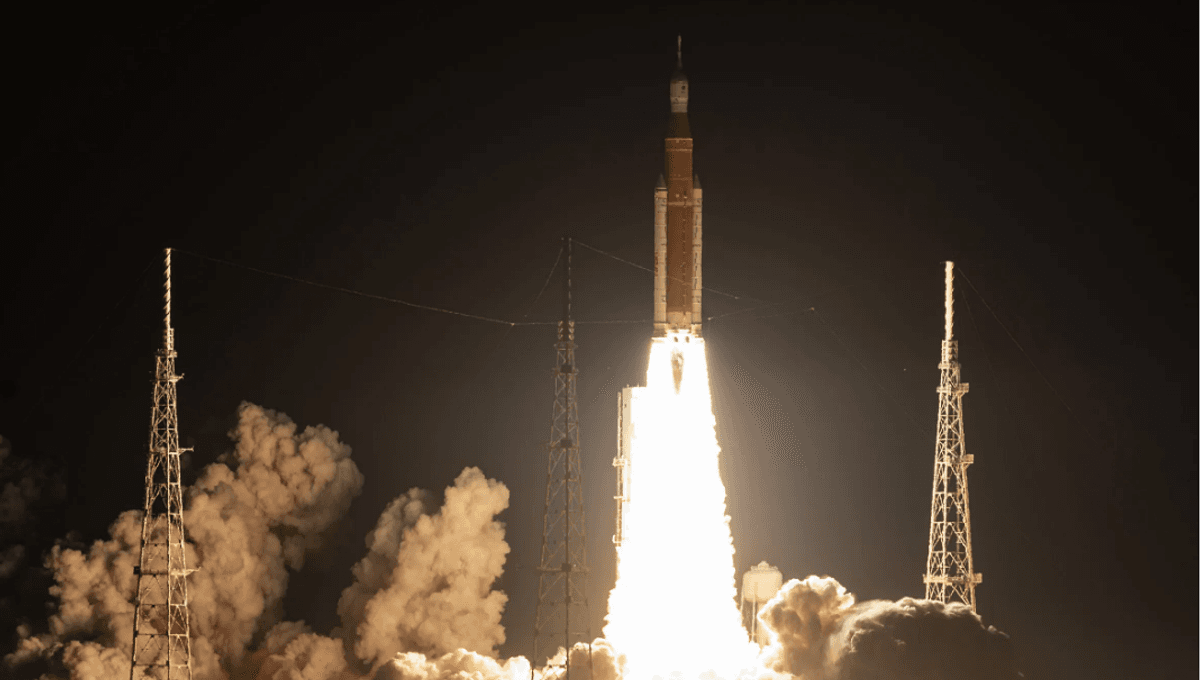
When Artemis-I blasted off in November 2022 marking a new dawn for missions to the Moon and beyond, it became the world’s most powerful rocket – and one of the noisiest too. Even if you were standing over 5 kilometers (3 miles) from the launch pad, the colossal rocket created a crackling sound that was 40 million times greater than a bowl of Rice Krispies.
Scientists at Brigham Young University and Rollins College in Florida recently reported noise measurements during the Artemis-I launch at different locations around Kennedy Space Center in Florida.
They found that the noise level reached 136 decibels at 1.5 kilometers (0.9 miles) from the launch pad, which is just a bit louder than a rock concert. Even at a distance of 5.2 kilometers (3.2 miles), the noise was 129 decibels, which is about the same as a thumping jackhammer (or A LOT of bowls of Rice Krispies).
“We found the Artemis-I noise level at 5 km had a crackling quality about 40 million times greater than a bowl of Rice Krispies,” Whitney Coyle, study author and Assistant Professor of Physics at Rollins College, said in a statement.
The thrust of the Artemis-I rocket launch beat the previous record holder, the Saturn V, which took humans to the moon in the 1960s and 70s, by 13 percent. Known as the Space Launch System, the rocket stands at a height of 111 meters (365 feet) with a diameter of 8.4 meters (27.6 feet) and wields a thrust equivalent to 14 jumbo jets.
It also kicks out a hell of a lot of sound, as this study shows.
“We hope these early results will help prevent the spread of possible misinformation, as happened with the Saturn V,” added Kent Gee, Chair of the Department of Physics and Astronomy at Brigham Young University.
“Numerous websites and discussion forums suggested sound levels that were far too high, with inaccurate reports of the Saturn V’s sound waves melting concrete and causing grass fires,” Gee explained.
During the Artemis-I launch on November 16, 2022, the giant rocket blasted the Orion spacecraft beyond Earth’s atmosphere and deployed 10 CubeSat satellites. When the rocket reached its desired location, the Orion capsule was left with the interim cryogenic propulsion stage, which took care of the journey’s next stage. Orion eventually completed a flyby of the Moon on November 21, followed by a second flyby on December 5 before returning to Earth.
The mission was essentially a test run that let NASA weigh up the challenges they’ll face in the later Artemis missions that hope to land humans on the moon in 2025. All being well, this mission will place the first woman and first person of color on the Moon.
NASA better stock up on earplugs…
The new study was published in JASA Express Letters.
Source Link: Artemis-I Rocket Made The Noise Of 40 Million Bowls Of Rice Krispies